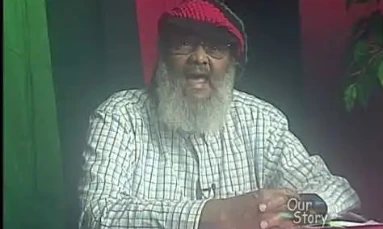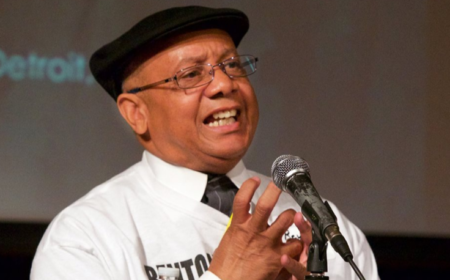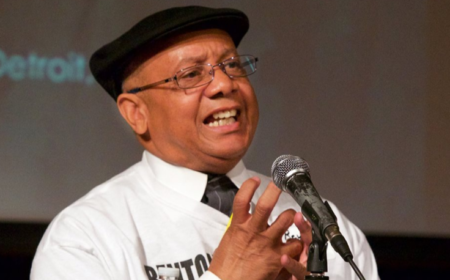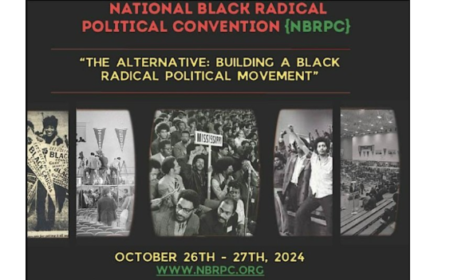
The first documented Africans to arrive in the English-speaking colony of what would become Virginia, arrived in August 1619 on the “White Lion,” a Dutch man-of-war ship carrying enslaved cargo from the West Coast of Africa.
The arrival of the ship was reported by colonist John Rolfe who wrote: “About the latter end of August, a Dutch man of Warr of the burden of a 160 tunnes arrived at Point-Comfort, the Commandors name Capt. Jope. He brought not any thing but 20 And odd Negroes, w(hich) the Governo(r) and Cape Merchant bought for victuals.”
The “20 and odd Negroes” had been captured in 1619 from “the Kingdom of Ndongo” in Angola. They were packed with more than 350 enslaved Africans aboard the Sao Joao Baustista, a Portuguese slave ship that set sail from the coast of Africa, bound for Vera Cruz, on the coast of Mexico.
“The ship was overcrowded,” said James Horn, the historian who serves as the president of the Jamestown Rediscovery Foundation. “It suffered horrible mortality on the voyage to Vera Cruz.”
And in the middle of the voyage on the high seas, the ship was attacked by two English pirate ships — the Treasurer and the White Lion — hoping to steal gold. Instead, they found human cargo.
The English boarded the ship and split the human cargo between the White Lion and the Treasurer. Weeks later, the White Lion arrived at Point Comfort in Virginia, where its captain traded the enslaved people for food.
Among those traded were a man and woman who were later named Antoney and Isabella and whose baby would become the first documented African baby baptized in English North America.
“Antoney Negro and Isabell Negro and William theire[sic] child baptised [sic]” are listed in the 1624 census in Virginia, becoming the first African family recorded in the colony.
That baby was named William Tucker, though not many more details about his life are known.
Telling the history
On Friday, Virginia Gov. Ralph Northam and other state officials visited the cemetery where it is believed the descendants of William Tucker are buried.
Next year, Virginia will commemorate the 400th anniversary of the arrival of the first Africans in English North America, who arrived on the slave ship that docked near the seawall of Old Point Comfort —now Fort Monroe — in Hampton Roads Harbor.
What followed was more than two centuries of brutal enslavement. By the time the Civil War began in 1860, census figures showed the slave population in the United States at nearly 4 million.
State planners commemorating 1619 with “American Evolution: Virginia to America 1619-2019,” have made a deliberate effort to be more inclusive in telling the history of the early colonists and Native Americans in Virginia.
“In 2019, we have the opportunity to move forward in appreciating the merging of African, English and Native American history in the Jamestown region,” said Kym Hall, superintendent of the Colonial National Historical Park. “We want people of all backgrounds to see themselves having a history here.
“This is ground zero of what we know became a codified history of slavery and the slave trade,” Hall said.
The Tucker family cemetery, a two-acre site, sits in the historic African-American neighborhood of Aberdeen Gardens in Hampton. The cemetery has more than 104 markers, with burials dating to the 1800s.
“It’s a historic moment for us,” said Verrandall Tucker, 59, a descendant of William Tucker.
His cousin, Walter Jones, 62, said the family believes William Tucker lived at Captain William Tucker’s plantation. “This is the closest cemetery to that plantation,” Jones said. “We did research and found we’re direct descendants of William Tucker. Based on the 19 servants who first came. All of that has been documented.”
English ships first landed in what is now Virginia in April 1607. The English, according to the Hampton History Museum, feared a Spanish attack at sea and sailed farther up the James River, where they established what would be known as Jamestown.
Kristopher Peters, museum educator at the Hampton History Museum, said the story of the first Africans is still being pieced together. Much of what historians know about the first Africans in the English colonies was discovered about 20 years ago, when Spain opened its archives to researchers.
The English-built galleons that attacked the slave merchant ship Sao Joao Bautista were the fastest ships in the world at the time, with superior fire power.
“In a matter of hours,” Peters said, “they subdue the Spanish ship, come aboard and find no gold and silver. Instead they find African slaves down inside.
“Now they have a problem. They have paid a lot of money to outfit this ship and come over here. They cannot return empty handed. They don’t have the provisions to do that. They take 50 or 60 of these Africans, put them on these two ships, divide them in half and they will come to the nearest English port, which happens to be Virginia, specifically Port Comfort.”
Antoney and Isabell
Antoney and Isabell appear in the Virginia census of Feb. 16, 1624, when Captain William Tucker, a slave owner in Elizabeth City County, lists them as part of his household. A year later, Isabell and Antoney are listed in “the muster of 1625” as: “Antoney Negro, Isabell Negro.” Then he added the name of “William, theire child, baptised.”
The first documented African child in the English colony of North America may have been born on Tucker’s plantation near the Hampton River. It is possible that he was baptized in a church in what was then an area where the Kecoughtan tribe settled.
Weeks after the White Lion arrived, the Treasurer docked in Virginia with more Africans. One of the earliest black women documented in the English colony arrived on the Treasurer. She would be called Angela.
“She is the only woman listed,” said Cassandra Newby-Alexander, professor of history at Norfolk State University and author of the book, “An African American History of the Civil War in Hampton Roads.”
Angela most likely came from the Kingdom of Ndongo, where the Portuguese created a fort that later became the Colony of Angola.
“Once the Trans-Atlantic slave trade was established, they would pay mercenaries to go out and seize prisoners of war,” Newby-Alexander said. “They would then enslave them and sell the prisoners through the slave trade.”
In Jamestown, Angela became a servant in the household of Capt. William Pierce, who would serve as lieutenant governor of Virginia.
An archeological dig is underway in Jamestown to find out more about the first Africans. And researchers are trying to find more about Angela.
“How old was she when she died. Did she have a child? What did she die of?” Newby-Alexander said. “We will know more about this person if they find any remains. And we can reclaim her humanity and so many Africans who were brought to the colony and were among that first generation of Africans who helped create America.”






